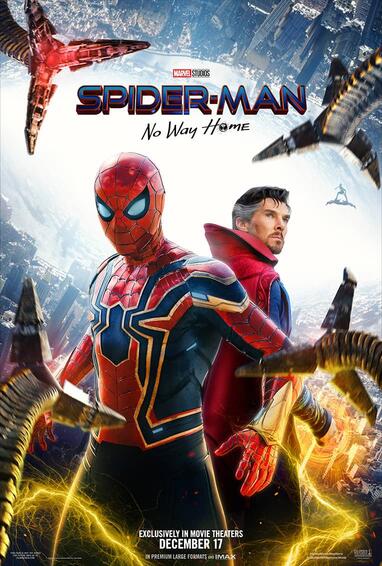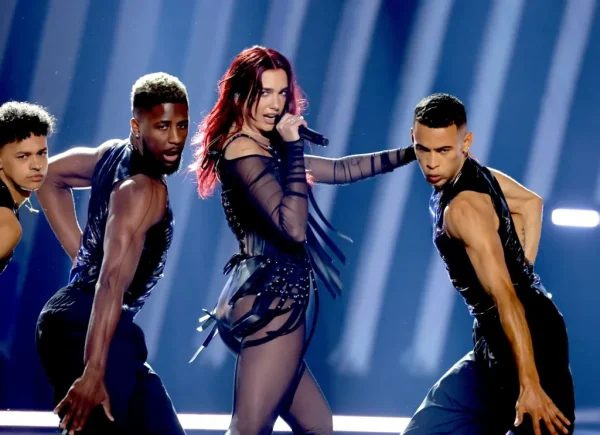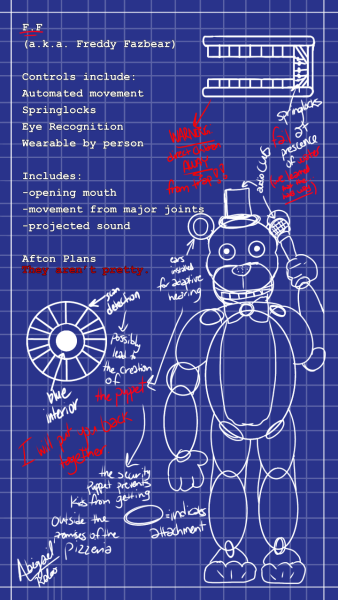Spider-Man: No Way Home—A Perfect Tale of Peter

One of the posters for No Way Home! Image taken from Marvel.com
Since 2020, the Marvel Cinematic Universe’s influence has certainly dwindled, but not even COVID-19 could undermine the absolute worldwide hype of a new Spider-Man movie. When Spider-Man: No Way Home released its first trailer on August 23, both my mind and the Web’s were spinning with possible theories and speculations to explain the various events and reveals presented to us. With all of the conjecture came some incredibly high expectations for the motion picture. And Spider-Man: No Way Home still somehow managed to blow them out of the water.
This movie follows the premise of the previous two Tom Holland Spider-Man films in Peter Parker’s struggle to balance being himself, Peter, and a superhero, Spider-Man. Right before the ending of Spider-Man: Far from Home, it seemed as if it was possible for him to live both lives. But when Jake Gyllenhaal’s Mysterio ousted Spider-Man’s identity at the very end of the film, it threw that entire ideal into question and fans exited the theater, excited yet worried for what the next film may entail for our beloved friendly neighborhood crime-fighter. No Way Home highlights Peter’s naive struggle to return his life back to the way it previously was and his attempt to make up for the problems his identity reveal has caused for his friends and loved ones. He wants to both maintain those relationships and still be Spider-Man at the same time. But instead, he’s shown again and again that those two lives can’t coexist.
Spider-Man: No Way Home has quite a number of villains. While I won’t go into who they are, this did make me nervous that No Way Home was going down the path of Spider-Man 3, which suffered as a result of having a large number of villains to fit into its two-hour and nineteen-minute runtime. Unlike Spider-Man 3 though, the presence of too many villains in the film did not bog it down at all. The movie was a story about Peter and it never strayed from that. While the villains were important, they were more important to the progression of Peter’s character than they were as their own characters. Which is fine. If the movie had spent too much time trying to develop its villains, which all appear in prior films anyway, the resounding impact of the ending would have been greatly diminished.
The only weak part of No Way Home to me was the very beginning. I was a bit disappointed that some of the dire questions the previous movie left us with were casually addressed in the first fifteen minutes so that the film could move on to tell the story that it wanted to tell. However, the narrative was just so compelling and well-crafted with astounding character development for Peter that I forgot about this issue entirely.
When asked for his opinion on No Way Home, Senior Matt Italo commented, “I found it to be sort of a love letter to the character and to the original movies. I felt that the setup to the movie’s conflict was a little bit contrived since it was very preventable, but that is something I can overlook because the conflict that it gave us is some of the best Spider-Man-related media out there.”
Senior Leonardo Castro agreed and praised it further for its “great amount of fan service” for Spider-Man fans, which I will not go into further as it’s a major spoiler for the film. Overall, Castro said, “I loved it. … The movie was such a well-written story.”
Ultimately, in my opinion, Spider-Man: No Way Home is the best of the Tom Holland Spider-Man trilogy and perhaps even the greatest Spider-Man story to ever grace the big screen. Its narrative was nearly perfectly told and it never forgot that, at the end of the day, its story was about the trials and growth of one person—Peter.






